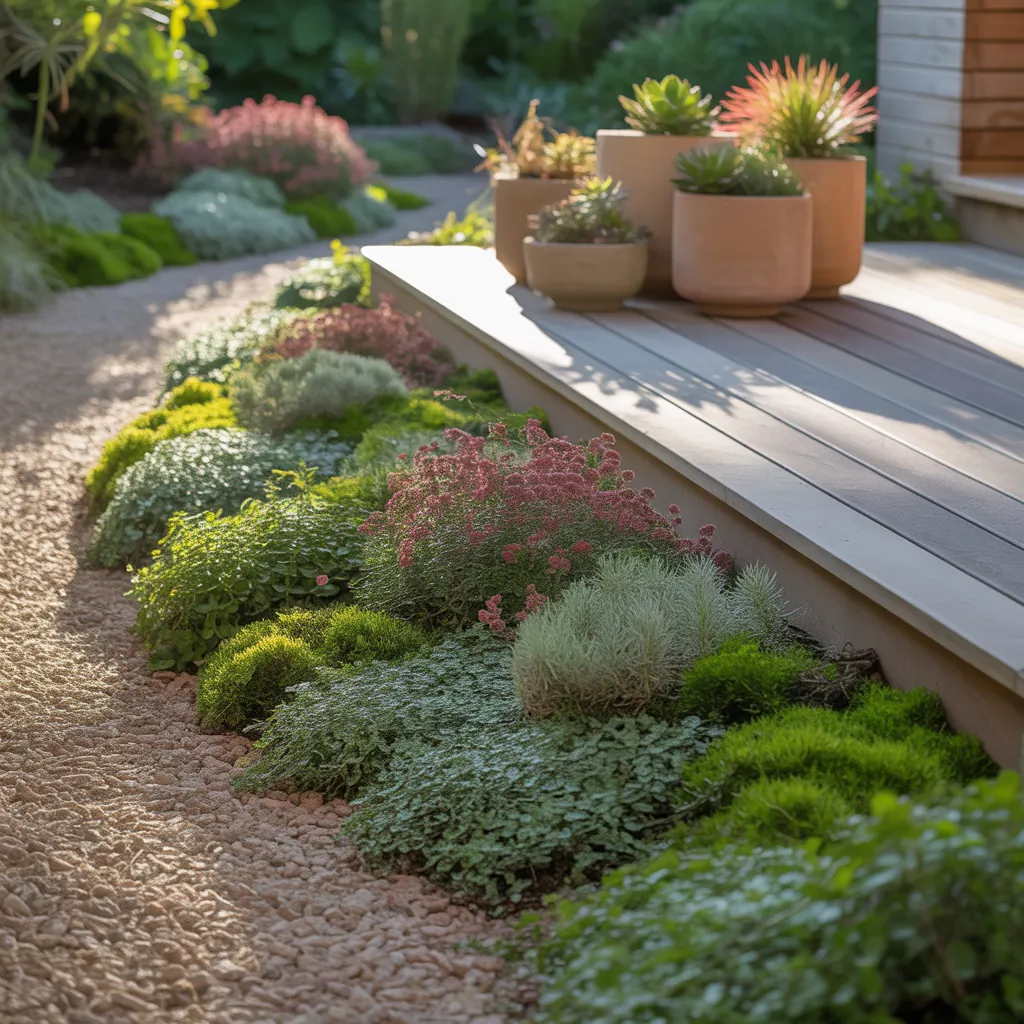Ever stood on your patchy lawn after a weekend of mowing and thought, “There has to be an easier way?” If you’re tired of watering, edging, and fighting weeds, replacing turf with low-maintenance ground cover plants could be the smart DIY solution you need. Whether you want a drought-tolerant carpet, shade-loving green, or colorful seasonal blooms, these ground cover plants low maintenance ideas will help you transform outdoor space without a full-time commitment.
Why Choose Low-Maintenance Ground Cover?
Swapping grass for ground covers saves time, water, and money. Beyond reducing mowing and irrigation, ground covers control erosion, fill awkward spaces like slopes and between pavers, and provide habitat for pollinators. For busy homeowners or weekend DIYers, low-maintenance landscaping means more time enjoying your yard and less time maintaining it.
Ground cover plants low maintenance ideas: best options and where to use them
Here are tested, versatile ground covers and where they shine. Use these long-tail search-friendly options when planning: “drought tolerant ground covers for slopes,” “shade tolerant ground covers,” and “best ground cover for full sun.”
Creeping Thyme (Thymus serpyllum)
- Best for: Sunny areas, between pavers
- Why: Drought tolerant, fragrant, attracts pollinators, tolerates light foot traffic
Sedum (Stonecrop)
- Best for: Rock gardens, hot dry spots
- Why: Succulent leaves store water; low watering; bursts of color in summer
Ajuga (Carpet Bugle)
- Best for: Shade to part sun, slope stabilization
- Why: Rapid spread, attractive foliage; watch for aggressive growth in some regions
Vinca Minor (Periwinkle)
- Best for: Shady borders, under trees
- Why: Evergreen in many climates; purple-blue spring flowers; requires control to prevent spreading
Pachysandra
- Best for: Deep shade where grass won’t grow
- Why: Low light lover; evergreen cover with minimal care
Creeping Phlox
- Best for: Spring color on slopes and rock walls
- Why: Masses of blooms in spring; forms a carpet of color
Moss and Mondo Grass
- Best for: Damp shade or minimalist modern gardens
- Why: Ultra-low maintenance once established; creates a lush, green carpet
DIY Step-by-Step: Replace Turf with Low-Maintenance Ground Cover
Follow this practical plan to convert a lawn or messy bare patch into a beautiful low-care ground cover area.
- Assess the site: Note sun exposure, soil type, drainage, foot traffic, and slope.
- Choose the right ground cover: Match plant to conditions (use drought-tolerant for sunny, well-drained sites; choose pachysandra or ajuga for shade).
- Measure and order: Calculate area and buy plugs or trays with 6–12 inch spacing depending on species.
- Prep the soil: Remove turf or weeds (solarize or sheet-mulch for an eco option), loosen top 4–6 inches, and amend with compost if poor.
- Plant: Dig holes at proper spacing, set plants at soil level, firm soil, and water deeply.
- Mulch and edge: Apply a thin organic mulch layer for moisture retention and weed suppression; install edging where desired.
- Establish: Water daily for the first 2 weeks, then taper to weekly for the first season. Control weeds and trim runners if needed.
Pro DIY tip: Plant in drifts or swaths of the same species for visual impact. Mix a couple of compatible ground covers for texture and seasonal interest.
Design Inspiration: Where to Use Ground Covers
- Front yard alternatives – Replace narrow strips of lawn with low growing thyme or sedum for curb appeal and lower water bills.
- Between pavers – Use creeping thyme or moss to soften hardscapes and provide a fragrant, durable fill between stones.
- Slope and erosion control – Plant deep-rooted ground covers like sedum or native grasses to stabilize soil and prevent washouts.
- Shade corners – Fill dark spots with pachysandra or mondo grass to create year-round green without constant care.
- Pollinator pockets – Add flowering ground covers like creeping phlox and thyme to support bees and butterflies.
Maintenance Tips to Keep It Low Effort
Even low-maintenance ground covers benefit from minimal attention. Here’s a simple seasonal checklist to follow:
- Early spring: Clean up debris, thin overcrowded patches, and top-dress with compost if needed.
- Growing season: Water deeply but infrequently once established; control invasive runners where necessary.
- Late summer/fall: Divide and replant congested areas; refresh mulch.
- Pest/disease: Most ground covers are hardy; address issues early by removing affected foliage and improving air circulation.
Real-world advice: Test a small patch first. Plant a 10×10 foot area and monitor how it handles weather and foot traffic before committing the whole yard.
Frequently Asked Questions
1. How quickly do ground covers fill in?
Growth rate depends on species and conditions. Fast-spreading covers like ajuga or vinca can establish in a single season, while slower plants like sedum may take 1–2 years. Proper spacing, soil prep, and initial watering speed up establishment.
2. Can ground covers handle foot traffic?
Some can—creeping thyme and certain sedums tolerate light to moderate traffic. If you expect regular pathways, plan stepping stones or choose turf alternatives designed for wear, such as microclover or low-growing ornamental grasses.
3. Are ground covers more eco-friendly than lawns?
Often yes. Many ground covers require less water, fewer chemical treatments, and less mowing. Choosing native, drought-tolerant species increases ecological benefits like supporting pollinators and preserving local biodiversity.
Conclusion — Start Your Ground Cover Project This Weekend
Ground cover plants low maintenance ideas unlock simple, beautiful, and sustainable landscaping for busy homeowners. With the right plant choices and a short weekend of prep, you can ditch the demanding lawn and enjoy a lush, low-care landscape that fits your lifestyle. Ready to get hands-on? Browse our DIY projects for step-by-step guides, check design trends on our home design ideas page, or if you’re refreshing indoor and outdoor living, explore kitchen upgrades for complementary updates. Start small, plan smart, and watch your new ground cover thrive.
Call to action: Pick one patch, pick a plant, and start this weekend — your lower-maintenance yard is a few steps away.



